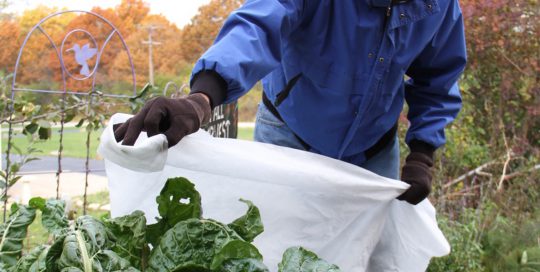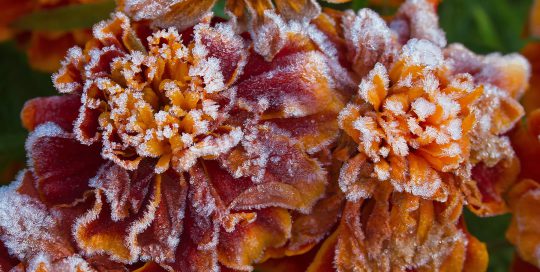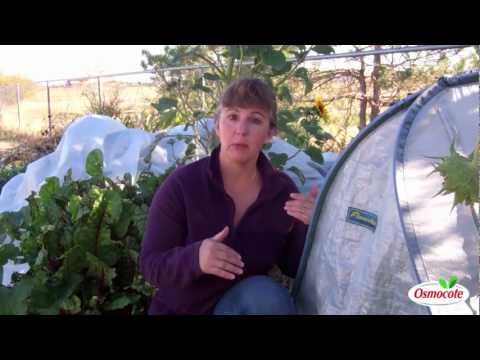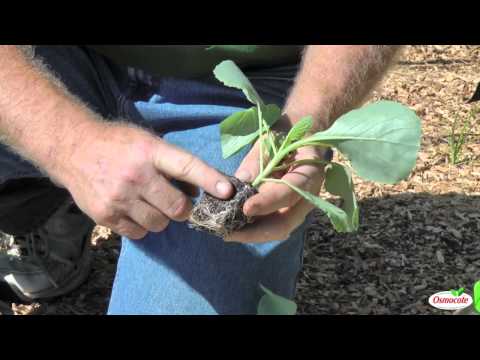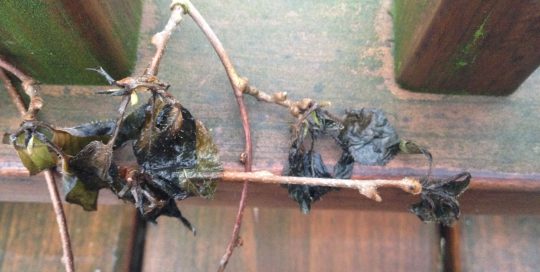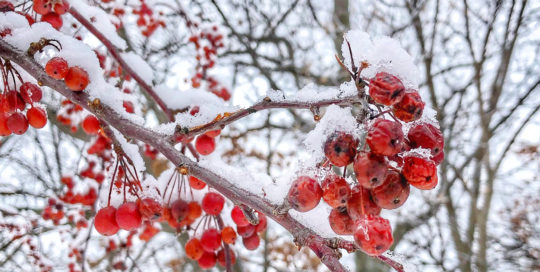Plastic or glass?
For the lid, a popular choice has long been old windows because glass allows the greatest UV transmission. Glass is also often cheap, or free. The primary drawback is it can break either in a hail storm or by accident. If small children are a factor, there may be a safety factor in using glass. If that is your situation, go with plastic to reduce the risk of injury.
Rigid plastic or polycarbonate sheeting (usually found at a local home improvement store) works well for this type of cold frame. 6-mil greenhouse sheeting can be used for many season extending applications. Personally, I prefer something more durable. Whatever is selected, cut it to size. It can also be purchased precut. Attach the sheeting to a frame and then affix it to the body of the cold frame.
Putting the cold frame in place
Taking advantage of every moment of sunshine is one of the primary objectives in creating a winter cold frame. So, the cold frame must face south.
To keep the frost from finding its way into the cold frame’s interior, dig a trench around the cold frame’s perimeter. At a minimum, the trench should be at least 6 inches deep, although in colder climates plan on going deeper. Once the trench is dug deep enough and wide enough, carefully lift the cold frame and place it in the soil. Replace the soil both inside and out.
Configuring the heat source
A traditional hot bed (a cold frame with a heat source) often utilizes a heating cable in the soil to keep plants warm. But truthfully, this often isn’t enough to weather the truly cold nights. The other option is to use a single, 75 watt halogen lightbulb. Incandescent bulbs also create heat, but I prefer halogen because it doesn’t burn out as quickly.
Some people place a small portable lamp inside the cold frame when extra heat is needed. Alternatively, attach a single bulb fixture to the back of the cold frame. Be sure to keep it several inches from anything flammable, including the wooden structure itself.
Whatever the heat choice, cover the connection between the light plug-in and the extension cord to prevent snow or water from potentially shorting it out, and always, always, always plug it into a Ground Fault Circuit Interrupter (GFCI) outlet. Water and electricity do not mix, but if you are vigilant about keeping everything dry, this situation is safe.
Planting inside the cold frame
Once the cold frame is set in place, it’s almost time to plant. If you’re planting in the middle of winter, allow the cold frame to be in place at least a week before you plant. Even spinach and radishes require at least 35 degrees F to germinate, although 40 degrees F is better.
When choosing crops, focus on cool season vegetables such as lettuce, spinach, chard, carrots, and radishes. Amend the soil within the cold frame just as you would your garden soil, and plant the entire area with the same spacing you plant in any other garden.
What you decide to plant is personal. If you are itching for the spicy crunch of radishes, plant a corner of those. If you can’t stand buying greens at the grocery store, plant more of those. Cover the seeds with soil, water lightly, and close the lid.
Tending your plants
Once the plants are growing, they’ll need watering, although not nearly as much as during the spring summer. Depending on temperature, this might be only once a week, but judge by the feel of the soil within the first 1/2 inch of soil. If it’s dry, give it a light watering.
One of the greatest risks of growing in a cold frame is too much of heat. If the temperature is above freezing and the sun is shining, the internal temperature of the cold frame can shoot up high enough to scorch plants. Even on cool days, open the cold frame at least a few inches. Many gardeners prop open the lid with a stick. There are temperature triggered openers at your DIY store which will automate venting, which is an enormous benefit for those who aren’t home all day to watch the movement of the sun.
Keeping plants warm at night
At night, even if the temperature is above freezing, it’s still a wise to turn on the light until those temperatures are routinely close to 40 degrees F. The additional warmth encourages growth.
For particularly chilly nights, place a blanket or two over the lid to help hold in the heat. If the walls of the cold frame are insulated, and the lid isn’t, this weak spot can doom your plants. In prolonged cold or a blizzard, keep the blanket on during the day, as well. Although light is probably the most critical aspect of growth, a couple of days under this dark protection won’t significantly affect the plants.
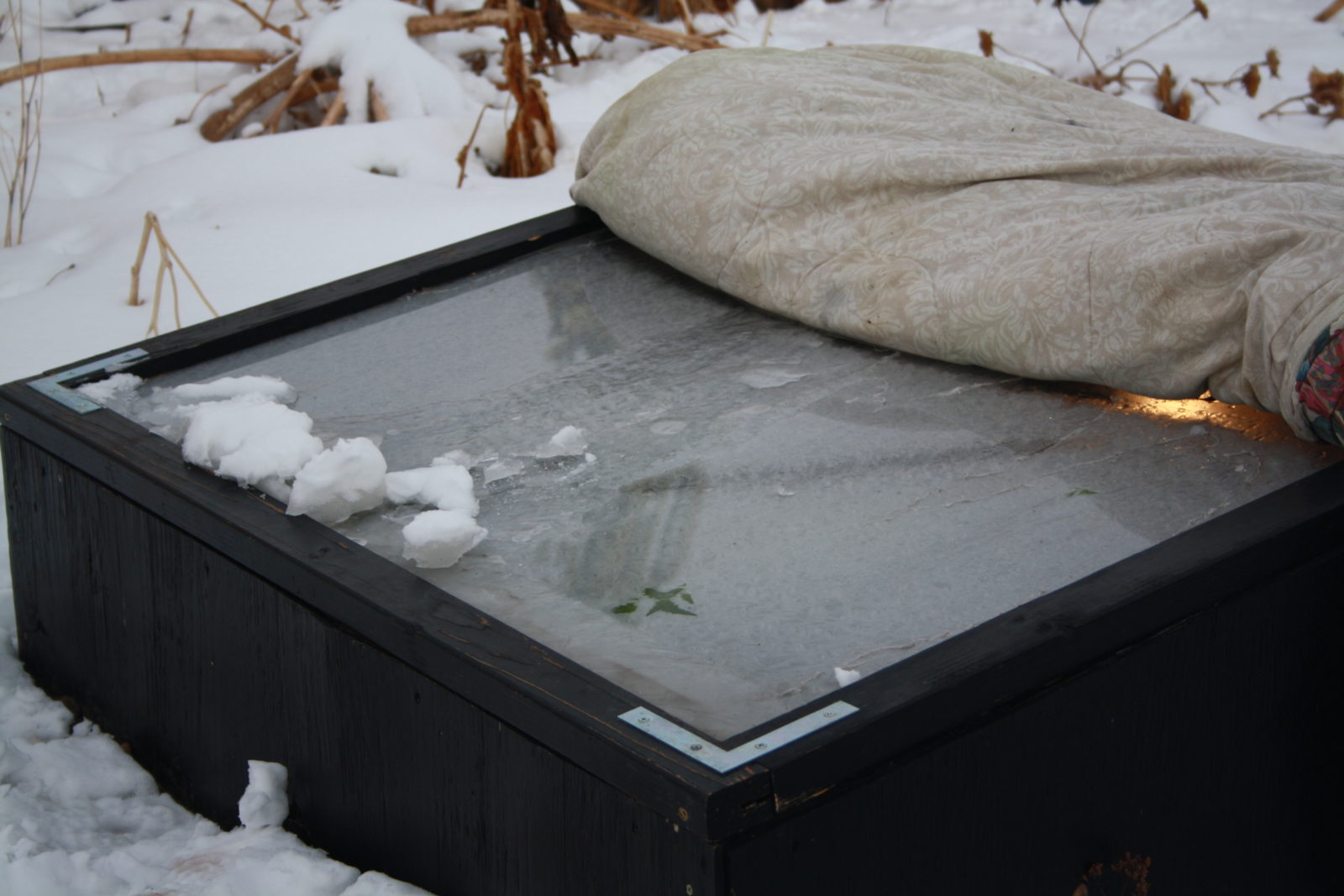
Winter cold frame with blanket rolled up – photo by Amy Grisak
As the season progresses, you won’t use the light nearly as often, but it’s always nice to know you have it available for a late season cold snap. And, as the days lengthen and warm, the lid can stay open most of the time, sometimes only needing to be closed on cold nights.

